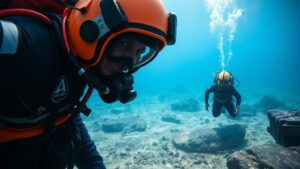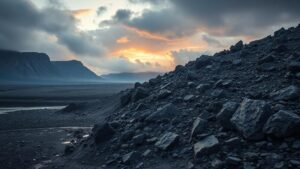Exploring Madagascar’s untapped interior for signs of ancient royal capitals.
Exploring Madagascar’s Untapped Interior for Signs of Ancient Royal Capitals
Madagascar, the fourth largest island in the world, is often celebrated for its unique biodiversity and vibrant culture, yet its interior remains largely unexplored in terms of archaeological potential. With evidence of rich historical narratives and ancient civilizations, researchers are turning their attention towards this untamed region in search of the ancient royal capitals that once thrived here.
The Historical Context of Madagascar’s Kingdoms
The history of Madagascar is marked by the establishment of multiple kingdoms, particularly from the 16th century onwards. The Merina Kingdom, centered around the highlands near Antananarivo, is one of the most notable examples. Founded in the 16th century, this kingdom ultimately unified the island by the 19th century under King Radama I. Understanding these kingdoms provides crucial context for the significance of potential archaeological sites.
The Untapped Potential of Madagascar’s Interior
- The rugged highlands, home to dense forests and steep valleys, are rich in materials that could hint at past human activity.
- Oral histories and local legends often reference ancient capitals lost to time, begging investigation for archaeological verification.
Research efforts have accelerated in the past decade, with archaeologists utilizing advanced techniques such as LiDAR (Light Detection and Ranging) to peer through the dense canopy and reveal hidden structures beneath the forest cover. According to a study by the University of Oxford, tools like LiDAR have become pivotal in mapping ancient settlement patterns in previously inaccessible regions.
Recent Discoveries and Methodologies
Archaeologists, led by Dr. Sarah Olds at the Madagascar Museum of Natural History, have reported significant findings from a recent survey near the town of Ambohitrambo. The site displays remnants of sophisticated stone structures, indicative of a highly organized society. Radiocarbon dating from these sites suggests activity from the 12th to 15th centuries, coinciding with the height of the Merina Kingdom.
These discoveries are critical because:
- They validate local folklore regarding ancient capitals.
- They provide insights into the political and social structures that existed.
Challenges to Exploration
Despite these promising revelations, challenges abound. interiors dense forest, combined with political and logistical issues, complicates further explorations. Access to sites can be hindered by difficult terrain and seasonal weather events, such as the cyclones that frequently affect the region.
Also, there is a delicate balance between exploration and preservation. Increased interest in these sites can lead to unregulated tourism, potentially damaging fragile ecosystems and cultural heritages. Local communities must be engaged in preserving their history while responsibly managing resources.
Real-World Applications of Discoveries
The implications of uncovering Madagascar’s ancient royal capitals extend beyond academic interest. For example:
- Tourism: Authentic historical narratives can attract cultural tourism, enhancing local economies.
- Education: Findings can be integrated into educational curricula, promoting awareness of Madagascar’s rich history.
Also, local artisans could benefit from the revival of traditional crafts, inspired by the materials and techniques uncovered through archaeological research.
Conclusion: Taking Action for the Future
The exploration of Madagascar’s untapped interior represents a significant frontier in understanding the island’s complex history. By employing advanced archaeological methods and promoting community involvement, researchers can not only uncover ancient royal capitals but also provide benefits that resonate throughout local communities.
In forays ahead, it becomes vital for stakeholders to advocate for sustainable exploration practices. stories of Madagascar’s past hold the potential to enrich its future–transforming the island not only into a living museum of its history but also a beacon of cultural heritage preservation.



